Five years ago, I first read Travelfishs assertion that Luang Prabang is the destination in Laos. Though I had come close to visiting in subsequent years, LP had always eluded me, like an itch that I could never quite scratch. At the tail end of 2013, I finally made a spur-of-the-moment break for the ancient capital, and it proved more enchanting than I had imagined.
Every travel guide out there describes the bus ride from Vientiane to Luang Prabang as long and gruelling. Theyre not kidding. To give an idea of what the terrain is like, the journey takes 11 hours by local bus but just 30 minutes by air. The ticket seller didnt take pity on this lanky foreigner, forcing my long legs to be folded up like origami in the tight back row.
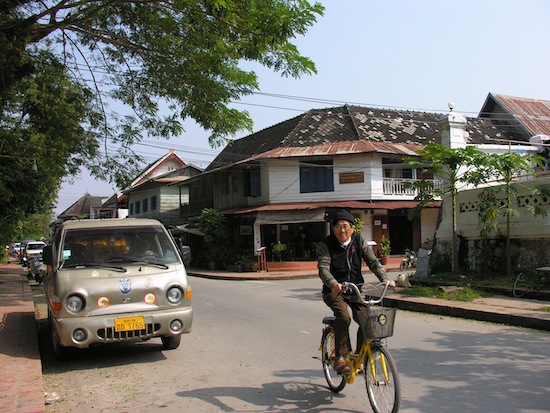
Welcome to LP, finally
As we set off, the friendly 19-year-old monk riding next to me popped a tiny yellow sleeping pill. For the rest of the trip, a sharp monk elbow stabbed into my thighs as the prickly hairs of a hard monk head dug into my shoulder. Though the scenery was breathtaking in places, it felt as though the bus was the tip of a pencil that wrote the letter S over and over (and over) on sloppy slopes of papier mache. Exhaust steamed inside the bus, passenger overflow relegated to plastic stools in the aisle. If you can afford it, take a plane.
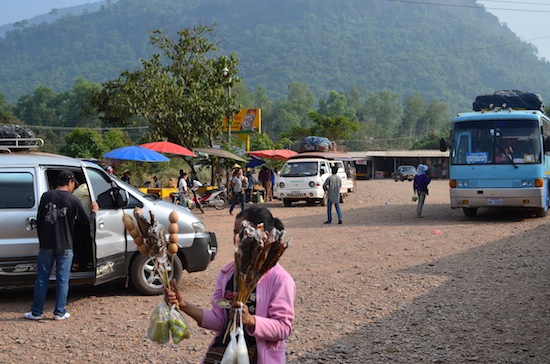
A quick rest stop, with the bus pictured on the right.
The next morning I wandered along the languid riverbank draped in tamarind and starfruit trees. A traveller strummed a guitar in the shade. The word Boat? lifted from nearby, and a skinny man with a smooth face and jet black hair appeared with a hopeful look. Within seconds I was perched on the engine shaft of a long and thin wooden skiff painted a similar hue as the hazy blue sky.
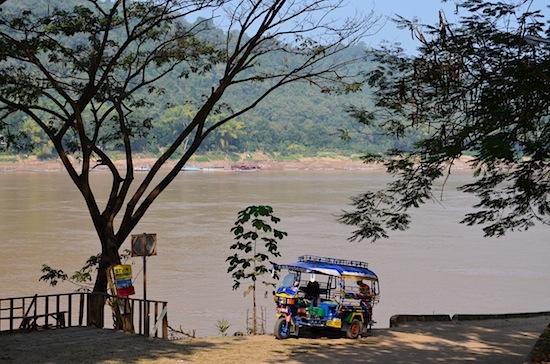
Morning along the Mekong.
I had seen the Mekong several times before, but only in places where it formed a border between Laos and Thailand. Here, its Laos river, and it wasnt until this ride that I came to understand just how vital a resource it is to this otherwise landlocked and mountainous nation. If Luang Prabang is Laos heart, the Mekong is its soul.
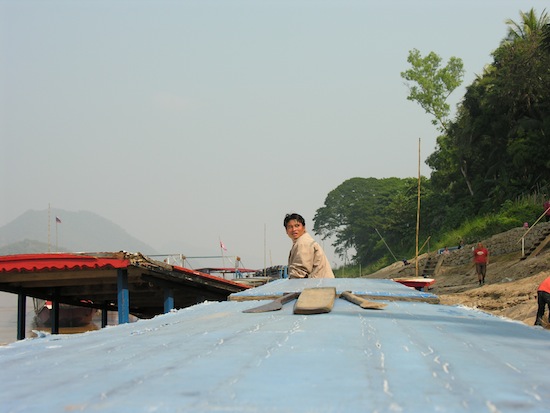
Shoving off.
Enclosed in bamboo fences and tended by old women with elaborate diamond patterns embroidered on their dark blue silk skirts, vegetable gardens sprouted on the fertile flats that stretched up to steep banks. Children played King of the Mountain as their fathers sat motionless next to long fishing rods dangling over chocolate-milk water.
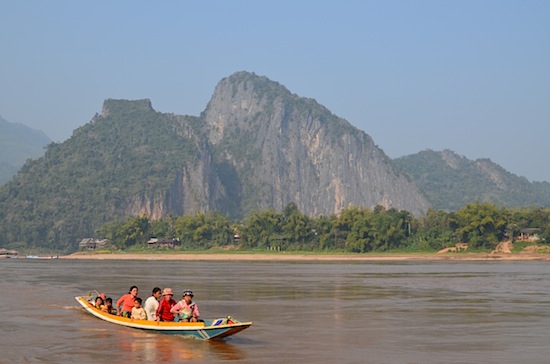
Unforgettable scenery.
Unlike most rivers that slide steadily along, the Mekong seems to follow its own rhythms and whims, flowing this way and that, bubbling like lava and swirling unpredictably. The driver expertly skirted the black, menacing rocks that churned up just enough white water to give me a thrill. In other stretches, the surface seemed to smooth out like dough under a rolling pin.
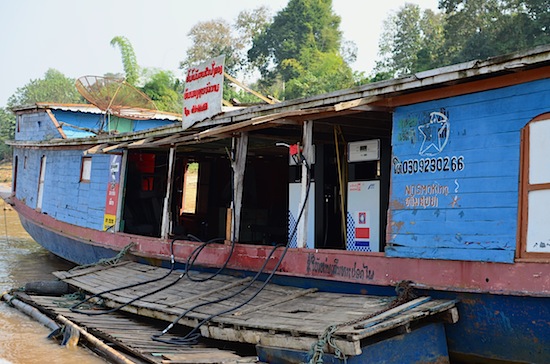
Floating filling station.
Scraggly grasses clung to the moon-like stones. A family sat on the far bank, charcoal smoke and the scent of grilling fish billowing above. Beyond them, unspoiled jungle.
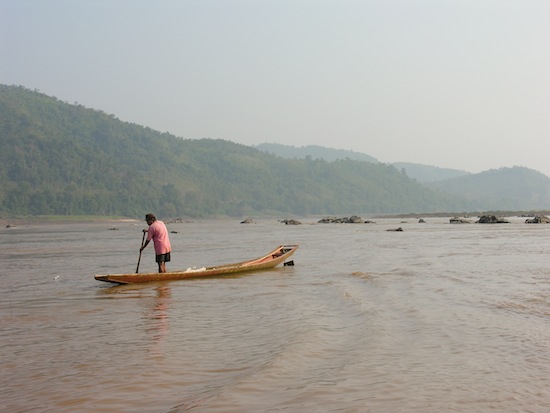
Mekong life.
We pulled up to a floating bamboo pier, and I soon found myself strolling through the tiny village of Xang Hai. The people here seem to produce two things silk scarves and alcohol made from rice and rye, often infused with actual snakes in an ancient elixir thats believed to increase sexual vitality.
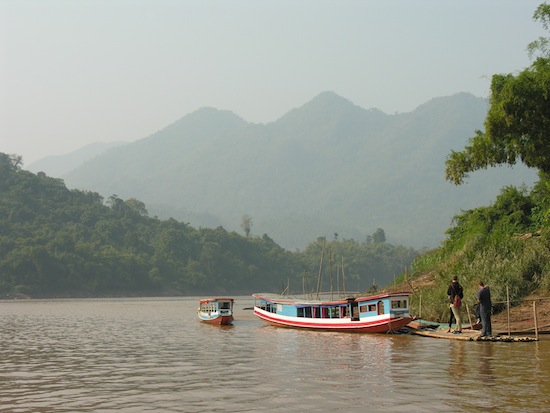
Approaching the whiskey village.
In different parts of the village, a group of old men showed off jagged teeth while cracking smiles and waving me over, and a boisterous group of young people yelled for me to join their karaoke and rice wine circle.
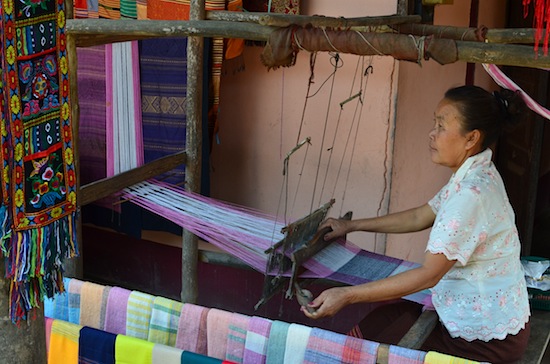
The silk weaving makes for better photos.
When I returned to find the boatman standing with a bottle in hand and guilty look on his face, he said, Just little bit for me. Barrels containing rye whiskey rendered from Mekong water smoked over charcoal fires nearby. Across the lane, an old woman used an even older wooden loom to fashion a pink scarf from naturally dyed threads of silk. Just down the road, a group of monks accepted a donation of onions and fruit brought by motorbike.
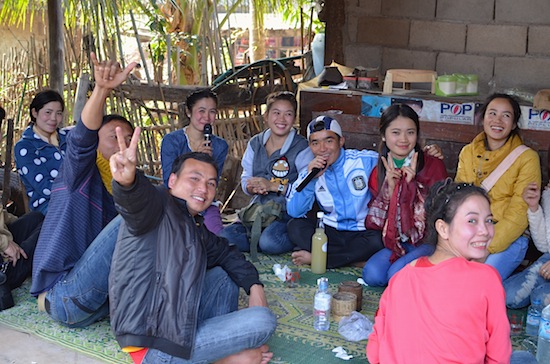
Singing in Lao is easier after a little rice wine.
Back on the boat, dramatic karst cliffs emerged from the haze to the north, and we soon pulled up to Pak Ou Caves. Carved like shelves into a foreboding cliff that dangles many metres over the water, monks, pilgrims and curious foreigners have been coming here for centuries.
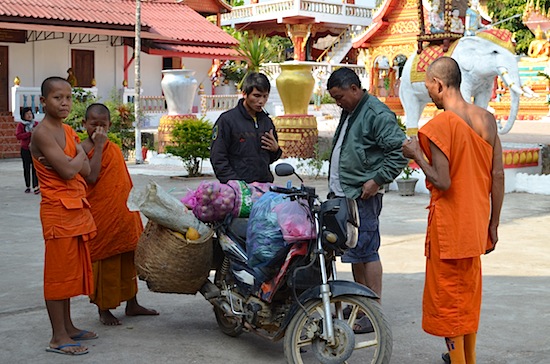
Keeping the wheel spinning.
The age-old custom of leaving Buddha images inside the caves has created a haunting and dishevelled melange of ancient, museum-worthy pieces mixed with souvenirs bought yesterday in Luang Prabangs night market. I had the sense that the caves are a sort of repository for past karma, which is encapsulated in the images.
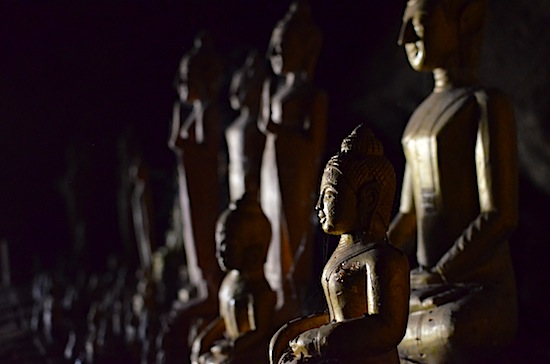
Cave of ten thousand Buddhas.
Though the caves now fill up with almost as many tourists as Buddhas, the chalky air still seems to drip with a mystical power. Fragrant incense smoke mixes with mustiness; bits of gold leaf shimmer amid shadows cast by flickering candles; thick cobwebs reach from one ancient Buddha head to the next.
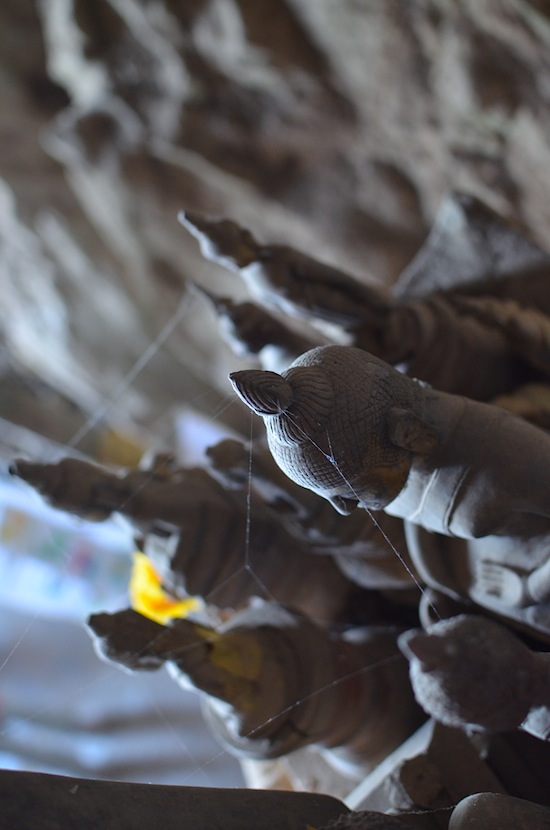
Yes, haunting is the word.
On occasion, monks spend days or weeks meditating in the darker and more distant upper cave. Near the mediaeval wooden doors that mark its entrance, pilgrims attempt to conjure their wishes by shaking out fortune sticks from a weathered crimson cup.
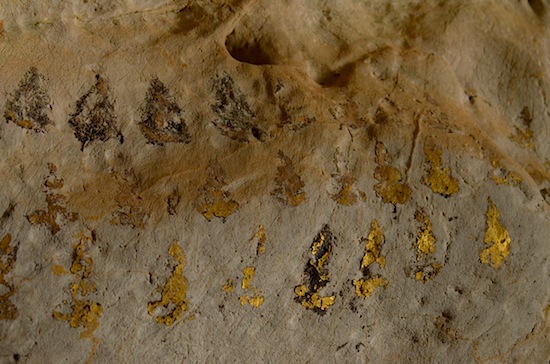
Gold leaf remnants on a cave wall.
Nearly five hours after setting off, our boat returned to the modest dock in Luang Prabang. We arrived just in time for a sublime Mekong sunset.
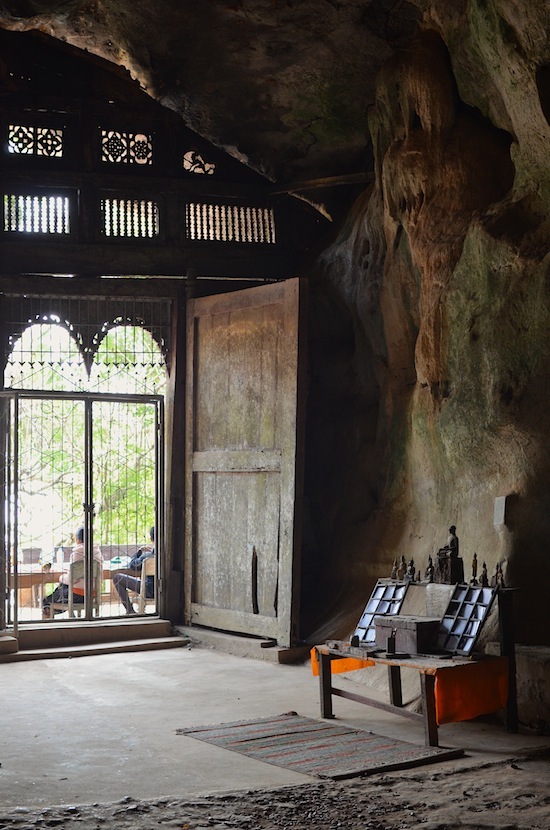
Entrance to the upper cave.
The next day, I wandered Luang Prabangs historic area, stopping every few steps to photograph the heritage houses that line the leafy streets. Some look like estates that were plucked out of the French countryside; others feature elegant Lao-style gabled roofs perched atop rustic wooden walls. Many fall somewhere in between, and therein lies the towns distinctive blend of architecture.
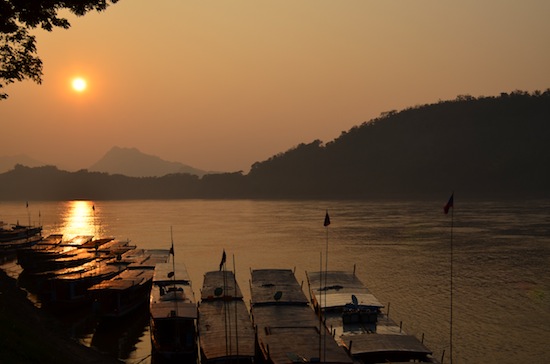
Theres nothing like a Mekong sunset.
Dozens of ancient temples add to the compelling architectural mix and rich history that afforded the town its UNESCO World Heritage status.
- See our handpicked suggestions for the best budget places to stay in Luang Prabang.
At the impressive 450-year-old Wat Xieng Thong, I stopped under the bronze-tinted leaves of a similarly ancient Bodhi tree and daydreamed about the kings, warriors, princesses and monks who would have prayed here long ago.
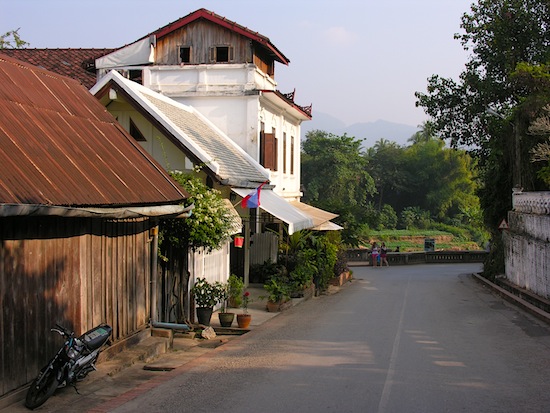
Layer upon layer.
In a word, the temples of Luang Prabang are magnificent.
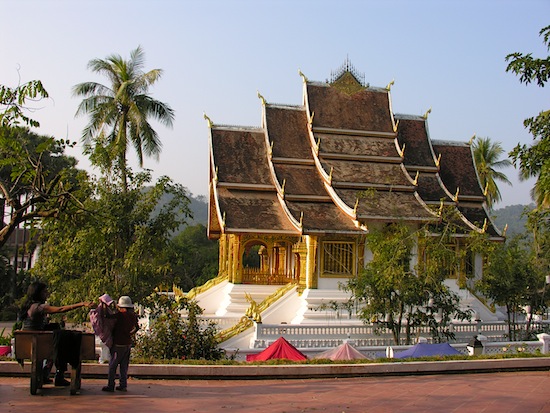
An ordinary Luang Prabang scene.
Seeking a break from the chilly late December air, I sought out a hot cup of coffee in Cafe Du Laos, one of many cafes that would fit seamlessly into a Paris street corner. I sat back and poured the rich and bitter French press brewed from beans grown in the surrounding hills. A classical guitar was picked with skill nearby. Even if travelling alone, its impossible to deny the romance of Luang Prabang.
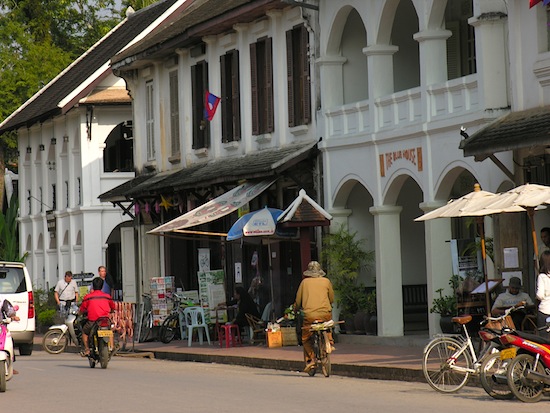
Strolling down Sakkaline Road.
Revitalised from the local brew, I climbed the 190 imperfect stone steps that lead to the golden chedi atop Mount Phou Si. From here, all of the elements that make Luang Prabang so special come together in one tremendous view.
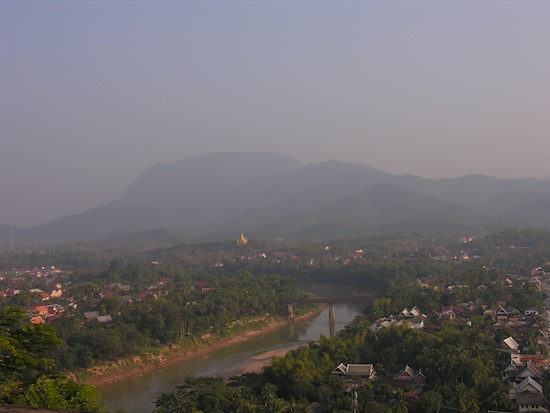
Looking southwest from atop Mount Phou Si.
Gracefully-arched temple roofs nestled up to galvanised houses. Slow-paced life unfolded on porches and in the streets. Never far off in both sight and mind, the Mekong slid past, just as it did when the area was settled many centuries ago. A surrounding vista of breathtaking green mountains rose to meet the clouds. Theres no doubt that Luang Prabang is touristy, but like Hoi An in Vietnam, the town seems to understand that preservation is vital to tourism.
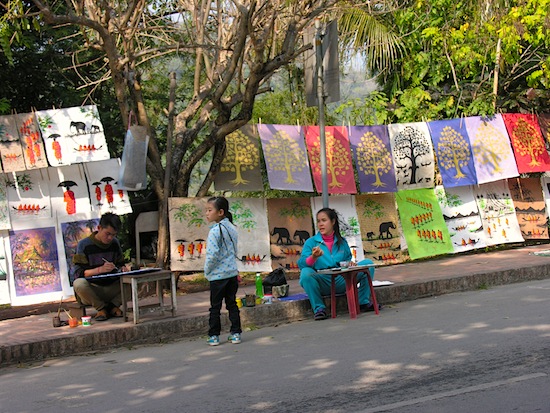
Many locals earn a living by creating art for travellers.
As darkness fell, I wrapped myself in a steaming bowl of noodle soup with fresh local greens, sprouts and chillies.
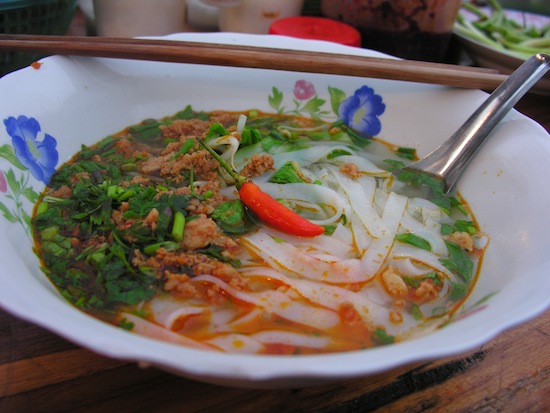
The food is another Luang Prabang highlight.
At night, Luang Prabangs markets are inescapable the only option is to be swept into streams of fresh meats, piles of clementines and dragon fruit, spicy bamboo shoot and papaya salads, aromatic soups, grilled Mekong fish, handmade sausages and endless displays of locally-crafted silk, silver and handicrafts. In a dim market corridor that was absolutely stuffed with food, travellers huddled around tables with Beerlao, local rice wine and laughter to keep them warm.
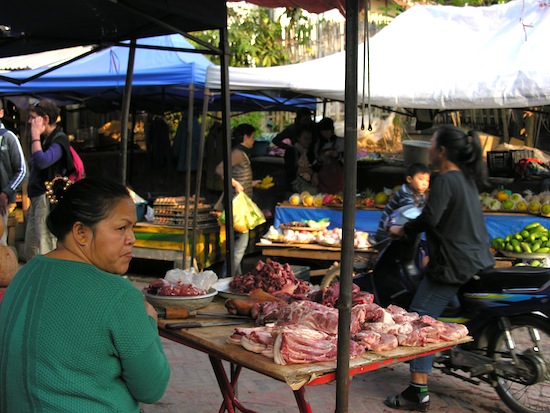
And, of course, the markets.
After a few more leisurely hours enjoying coffee and croissants in Luang Prabangs fabulous cafes, I returned to Vientiane the next day. Rather than endure another one of those bus rides, I opted for a relatively cheap flight with the tiny local carrier, Lao Central. Though it was just a short taste, I learned first-hand that Luang Prabang is not only the destination in Laos, but indeed, one of the most magical in all of Southeast Asia.